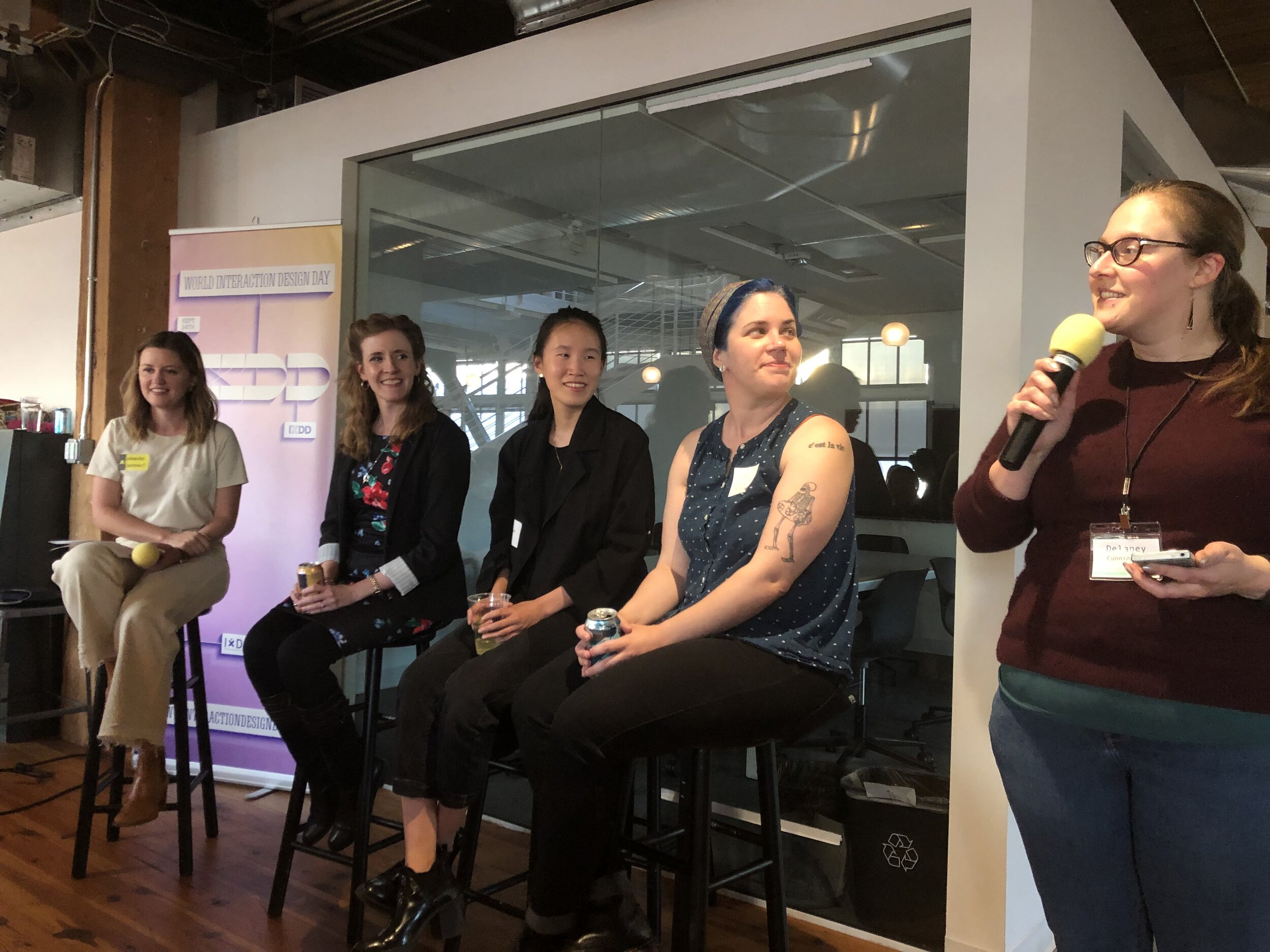World Interaction Design Day: Trust & Responsibility
World Interaction Design Day (IXDD) is an event to bring together the global interaction design community in celebration of the practice’s impact on our world. A partnership between Adobe and the Interaction Design Association, IXDD specifically looks to examine how Interaction Design is able to improve the human condition, especially since design shapes how we experience technology. As Matt May, head of Inclusive Design at Adobe, said during the introduction of Seattle's IXDD event, “Establishing and maintaining trust with our users and customers is critically important…We have a responsibility…to say no, this isn’t going to work.” In other words, a large amount of trust is being placed in designers to facilitate human relationships with technology. This was the inspiration behind IXDD’s theme of Trust & Responsibility and the topic of focus for the event’s panel discussion.




Hosted by Artefact, a Seattle-based human-centered design and strategy firm, the panel consisted of the following designers: Cheryl Platz, a Principal UX designer at the Bill and Melinda Gates Foundation, Tiffany Chen, a UX Designer within the Inclusive Input and Accessibility team at Microsoft, and Devon Persing, an Accessibility Specialist with Shopify. Moderated by Hannah Hoffman, Associate Design Director from Artefact, these designers guided the audience through the complicated waters that interaction design has become, before unraveling what we as designers can do to ensure that trust and responsibility are at the heart of our practice.
Trust + Responsibility in Practice
Hoffman began by acknowledging that design, as an industry, should strive to do good in the world, yet even with our good intentions, our design choices have unintended consequences. Panelists were asked about the times in which they wished their design teams had done something differently, in the context of trust and responsibility. A common theme emerged from their responses: designers need to go beyond examining what trust is to explore what it looks like in practice. The examples they raised of how to institute trust ranged from co-creating design in the moment, to being open to new solutions, to ensuring design is not reactive, but proactively implementing positive change.
Cheryl Platz noted that, for her, design is storytelling, which requires transparency and sensitivity to the multifaceted nature of human behavior. Storytelling via design, however, must acknowledge that trust within design is layered—it is not only about trust between the designer and the user, but also the user and their interactions, and the user and the brand.
Tiffany Chen introduced the concept With Not For by Laurenellen McCann as an example of trust as a practice. “With not for” is the slogan of a movement that advocates bringing the user into the design process as much as possible. Chen asserts that involving the user community ensures better design, specifically in terms of accessibility. “Trust is built and reinforced when we use co-creation as... building blocks.” Chen sees co-creation as a necessity of design practice, not simply a best practice.
The “With not for” concept underscores how trust and responsibility are tied to access and accommodation within design. Chen and Platz both explained that trust in design is not just about designers talking to users, but co-designing with users. Platz explained that these conversations should not feel like one-offs, because “trust is not a one-way street.” Co-creation should be a reciprocal iterative development of an idea, involving the user community throughout.
The panelists segued the discussion into how teaching and learning are essential to responsible design. Persing explained that the key to ensuring design is accessible, is to examine the preconceived notions that go unnoticed. Instead of starting a design with a specific accessibility-focused question, she suggests working backward to examine the circumstances of how that question came to be. Persing’s approach allows for the co-creation process to be more than information sharing, but an exchange of knowledge. It is a two-way street: we develop our design expertise by learning from our users, and they become more creative problem solvers by learning about design from us. It is this transfer of ideas that develops trust and responsibility. In essence, it is design interaction engendering “with not for.”
Moving Forward
We as designers build user trust by being inclusive of users from the beginning of our design process. Progressing conversations like the one had by this panel is what will spur changed within the industry. Such conversations must continue between designers, accessibility and diversity advocates, and users. This evolving change, according to Platz, requires us as designers to use “our imagination more.” Chen echoed this, noting that we continue moving forward when we ask ourselves “who are we responsible to”; and allow ourselves to find tiny pockets of change to adopt and advocate. Relatedly, Persing declared, “collaboration is huge” and necessary. Collaboration needs to go beyond acknowledgment. It needs to be a culture of asking questions and treating collaboration as a strength, not a distraction.
Ultimately, the ideals of trust and responsibility are not lacking in design. But we must examine why these ideals are not apparent in the user experience of our designs. The panel all agreed that taking a collaborative, user-centered approach to design is the first step.

